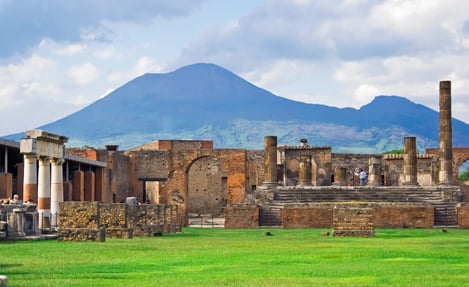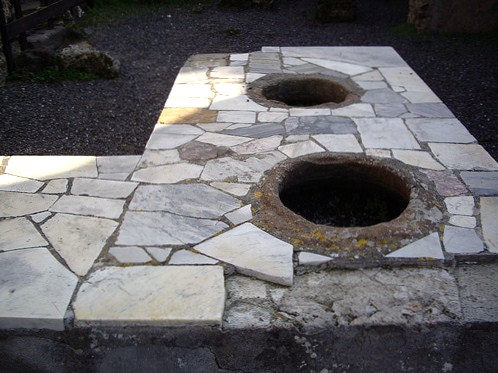
Nestled in the shadow of Mount Vesuvius, a tour of Pompeii is an absolute must when visiting Italy’s beautiful Campania region. This remarkable city buried for centuries under eight metres (20 feet) of volcanic ash is world-famous. But what about Herculaneum? Only a few kilometres from its more famous neighbour, modern day “Ercolano” is a hidden gem and is well worth a visit too. Here are my 5 reasons why visiting both of these UNESCO world heritage sites should be on your travel wish list.
A city with 11,000 souls in its hey-day, Pompeii is simply enormous. Although only a portion is open to the public you’ll still need plenty of time to explore the streets, wander in and out of houses and shops and admire the stunning amphitheatre, bath houses and forum. Herculaneum is far smaller and will take no more than half a day to visit so you can spend the rest of the day relaxing.

Surely one excavated ruin is enough?? Pompeii and Herculaneum are different experiences because of the way they were buried in Vesuvio’s 79AD eruption. Pompeii was destroyed through immense heat which incinerated everything in its path. It is perhaps most famous for plaster casts of its fleeing inhabitants, many of which are now to be found in the Naples Archeological Museum (also well worth a visit). Some casts are still to be found at the original site and are a haunting reminder of the human cost. Herculaneum was buried under the pyroclastic flow of burning ash particles meaning that whole houses, wooden roof beams and even furniture and papers survived. Over the intervening centuries, the sea has moved further away but Herculaneum was on the coast and the remains of skeletons have been found huddled under the arches of the boatyard, each telling their own story through their possessions and family groupings.
The two sites share many similarities such as stunning frescoes, complex water systems and prominence of accessible bath houses. In a hot, dusty part of the empire, the Romans maintained a scrupulous cleanliness. The contrast is also fascinating with the taller, still partly-roofed buildings of Herculaneum displaying the town’s affluence. It’s easy to imagine the bustling day to day city life of the citizens as they shopped, worked, played and traded goods from around the Mediterranean.
From Pompeii’s graffiti and remains of bread in the ovens to Herculaneum’s burnt scrolls and modern-looking bed, it’s striking how close we seem to these ancient Romans. They went to work, haggled over wine prices, worked out at the gym and saved their money for the future. It’s the little details at both sites that truly bring History to life.

Both sites have stunning examples of frescoes and no article about Pompeii is complete without a mention of its more suggestive themes! From the erotic art on the walls of the brothels to the well-endowed figure of Priapus, ancient Roman art has shocked archaeologists and visitors over the years. Nowadays the frescoes at both sites are impressive simply for their clarity of colour and detail. If you’re bringing young children with you, however, make sure you know what to expect!
Whether you visit one site or both, don’t forget your camera, sturdy shoes (don’t underestimate the amount of walking you’ll have to do!) and plenty of water, to enjoy these two reminders of a unique civilization, once though lost for ever but now accessible to all.
Latest Tweet:
Pre-booked tickets are usually cheaper than at the entrance
Most Popular Tickets
About Us
Additional
© Attraction World 2024
Normal opening times:
Mon – Fri: 10am – 4pm
Sat, Sun: Closed